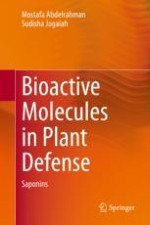2020 | OriginalPaper | Buchkapitel
5. Saponin-Detoxifying Enzymes
verfasst von : Mostafa Abdelrahman, Sudisha Jogaiah
Erschienen in: Bioactive Molecules in Plant Defense
Aktivieren Sie unsere intelligente Suche, um passende Fachinhalte oder Patente zu finden.
Wählen Sie Textabschnitte aus um mit Künstlicher Intelligenz passenden Patente zu finden. powered by
Markieren Sie Textabschnitte, um KI-gestützt weitere passende Inhalte zu finden. powered by
